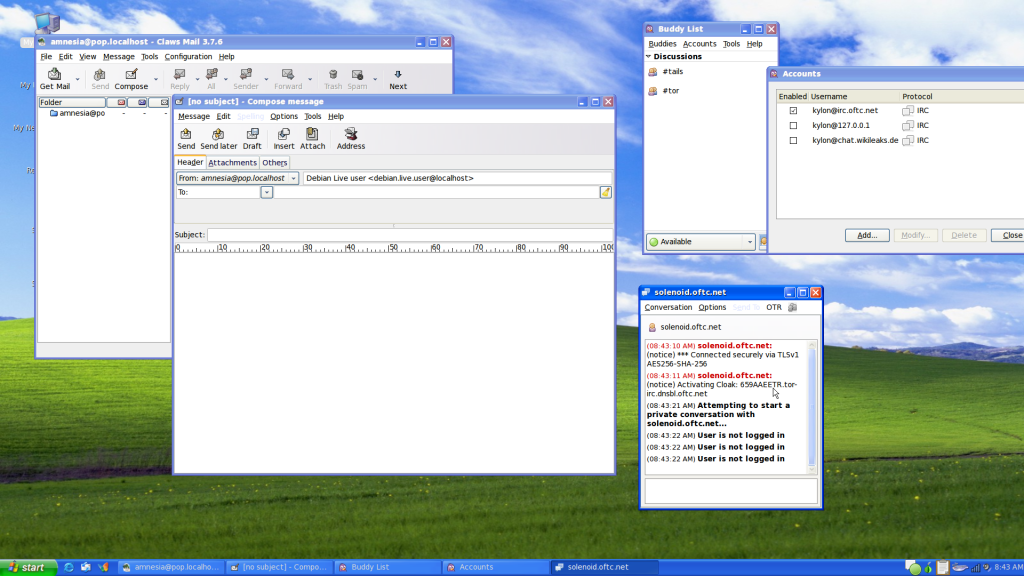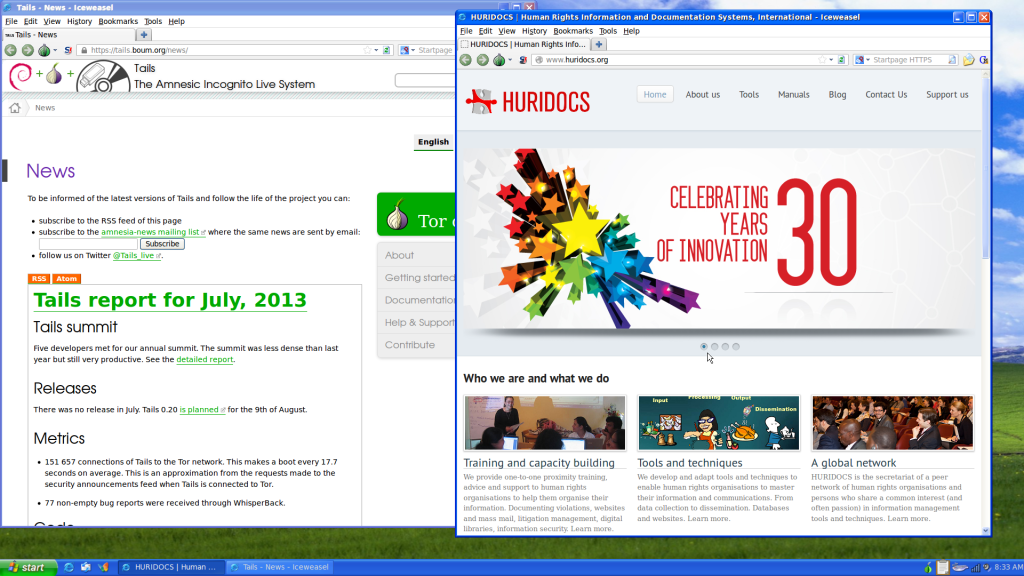In the digital age of growing government and corporate surveillance all across the world, the Internet remains a crucial medium of everyday life. E-mail, social networks, digital media and seemingly unlimited data allow us to connect with the people and things we love whenever we want. It is more than that: through the internet we can all be publishers and the world can be our audience.
At the same time, privacy and anonymity are increasingly coming under attack. Data and information have never been more valuable to both states and corporations, and human rights groups are often the primary targets (as was recognised in this recent landmark UN report).
Human rights groups at risk
Trends of censorship and surveillance are troubling for human rights defenders and those who document and track human rights violations. This is primarily because:
- human rights defenders often hold data about people who have become victims of human rights violations
- this data needs to be protected to prevent further abuse
- this data oftentimes incriminates the powerful and state institutions that want to prevent information from spreading.
This is especially worrisome in countries where governments themselves are committing abuses; where states have every incentive to shutter the people and institutions that chronicle and speak out against human rights violations. Through intimidation, censorship and cyber-attacks, some governments go far beyond simply aggregating metadata and conducting surveillance. Even governments who may not have the capacity themselves to do this opt to purchase these services from hackers or ask other governments for help.
A degree of privacy and anonymity on the Internet
Tails is an operating system that includes many privacy-enhancing tools in one – and you can run it without tampering with your existing system, or on a computer you do not trust. To disguise it while in public places, you can choose an interface closely modelled to Windows XP.
While total privacy and anonymity of online communications is hardly possible, there are some things you can do. This is not only about tools, but more importantly about thinking security and changing your behaviour. Tools, however, help you to achieve your aims, although you should not see them as silver bullets that can guarantee 100% privacy, security and anonymity. This is especially true if you are specifically targeted by governments or corporations that possess significant manpower and resources for monitoring.
However, do not think all is lost! Today, I shed the spotlight on one tool Internet users can employ in order to conveniently enhance security through an incognito online experience: Tails.
Tails is a live operating system that you can download onto a DVD or thumb drive, so there is nothing you need to install on your computer or in fact on any computer –you can use it without leaving a trace or harming your running system. Tails’ essential purpose is to provide a safer and more anonymous web platform where users have a much higher degree of online privacy; shielded from tracking, locating software and identity detection. Tails even allows you to choose a user interface similar in appearance and navigability to Windows XP
Tails network components: a sum of its parts
Shorthand for The Amnesic Incognito Live System, Tails works as a bundle of a few different privacy and security tools:
- the Tor Browser Bundle and network for anonymous web browsing (using the plugin HTTPS Everywhere that forces an encrypted SSL connection)
- simple user interface with a Windows XP-like option
- ability to leave no trace of using the system
- the chat client pidgin as well as Kmail, an email program for both standard and encrypted mail

One of its most central components is Tor, a volunteer-powered network that directs web traffic through multiple servers. Once in the network, web information is then encrypted and bounced multiple times to hide your location. These measures confirm that one’s web use is relatively free from traffic analysis or network surveillance. Or that at least it is very difficult to connect the dots between you and the services you are using.
You can also use the Tor network with your existing operating system by downloading it directly onto your computer. Just download the Tor Browser Bundle which includes HTTPS Everywhere, a plugin to your browser that will force https with major websites (they all offer this service, but it is not always used automatically). You may also download this by itself for Firefox or Google Chrome.
The Tails interface also comes with e-mail and instant messaging applications so you can use your existing accounts (which can be problematic) or create new ones. While working within Tails, you may also choose to record your activities or wipe all traces of using the live system.
What’s really convenient about Tails—especially for activists—is that not only does the system have privacy and anonymity tools; it also comes with photo and video editing programs. This allows for Tails as a whole to encompass an arsenal of tools that activists would need to conduct their work on the go.

Before trying out Tails for yourself, check out the system’s website which offers directions on how to authenticate the Tails files downloaded from the site. Authenticating the files is critical to ensure you are not a victim to a man-in-the-middle attack. In other words, it helps you to be sure you are downloading the real Tails and not a bogus one created by your most cherished intelligence agency.
While using this system may not be for everyone, and while there are limits to its enhanced security and privacy (and making them usable on a daily basis), Tails is a convenient tool for those who work with sensitive documents and information, especially if you use several computers, some of which you maybe cannot trust. It’s easy to install and use, and a great way to get a head start with many tools that help you protect your privacy and communications – just do not believe that building web security and privacy stops with Tails.
Zach started as an intern at HURIDOCS in June 2013. At HURIDOCS, he supports the functions of his co-workers by editing, revising and restructuring web content, creating video guides and a website for OpenEvSys, and identifying bugs in our database software. Zach holds a B.A. in International Relations from Boston University and was selected to serve in the U.S. Peace Corps next summer. He blogs with friends over at the Global Atlas, an international affairs blog.
